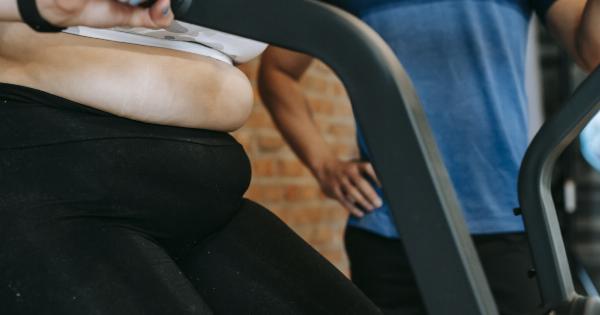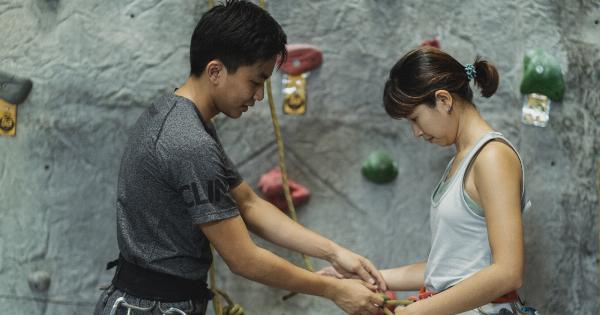In recent years, there has been a growing need for advanced medical devices, especially for infants who require specialized care.
One of the most critical medical conditions in newborns is kidney failure, which necessitates continuous treatment to sustain their life. However, the lack of portable kidney treatment devices specifically designed for babies has been a significant challenge for healthcare professionals.
To address this issue, a team of skilled engineers and medical experts has designed a revolutionary portable kidney treatment device tailored for infants. This ground-breaking device aims to provide efficient and effective treatment options, improving the quality of life for these vulnerable patients.
The Importance of Portable Kidney Treatment Devices for Babies
Kidney failure in infants is a severe condition that requires immediate medical attention to prevent long-term complications.
Currently, most kidney treatment devices available in healthcare settings are primarily designed for adults or older children, and their size and complexity make them ineffective for use in neonatal intensive care units (NICUs). The lack of specialized devices puts babies at a disadvantage, as they require smaller and more gentle treatments to avoid additional harm.
Moreover, the inability to provide adequate kidney treatment to infants often leads to prolonged hospital stays, increased healthcare costs, and emotional distress for both the baby and their parents.
Therefore, the development of a portable kidney treatment device specifically designed for babies is crucial to improving their overall care and well-being.
The Design Process
The design process of the portable kidney treatment device for babies involved a multidisciplinary team of engineers, medical professionals, and designers.
Extensive research was conducted to understand the specific needs and limitations of infants requiring kidney treatment. This research served as the foundation for the device’s design, ensuring it meets the highest standards of safety, efficacy, and comfort.
Size and Portability
One of the major challenges faced by the design team was creating a portable device suitable for newborns. Recognizing the delicate nature of babies, the device’s size was significantly reduced compared to standard kidney treatment machines.
The compact design allows for easy maneuverability within the NICU and ensures the infant’s comfort during treatment. Additionally, the lightweight nature of the device enables healthcare professionals to transport it easily between hospitals, if necessary.
Gentle and Precise Treatment
Infants have much smaller blood volumes compared to adults, requiring a more delicate treatment process. The portable kidney treatment device utilizes advanced technologies and algorithms to provide precise treatment tailored to the needs of babies.
The device carefully monitors and adjusts filtration rates, minimizing the risk of any adverse effects. The gentle and gradual treatment ensures the fragile health of the infants is not compromised during the process.
Continuous Monitoring and Safety Features
To ensure the safety of the babies, the portable kidney treatment device incorporates continuous monitoring capabilities.
The device offers real-time tracking of vital signs such as heart rate, blood pressure, and oxygen levels, enabling healthcare professionals to closely monitor the infant’s response to treatment. Additionally, the device is equipped with safety features that automatically halt the treatment if any abnormalities are detected, minimizing potential risks and ensuring the baby’s well-being.
User-Friendly Interface
A user-friendly interface was a key aspect in designing the portable kidney treatment device for babies. The device’s interface is intuitive and easy to navigate, enabling healthcare professionals to operate it efficiently.
This user-friendly design minimizes the risk of errors and ensures optimal treatment delivery. Moreover, comprehensive training and support are provided to medical personnel to ensure they are well-versed in operating the device effectively.
Collaboration with Healthcare Professionals
Throughout the design and development process, the engineering team closely collaborated with healthcare professionals specializing in neonatal care.
Their invaluable insights and expertise were essential in tailoring the device to meet the specific needs of babies. This collaborative approach ensured that the portable kidney treatment device aligned with the best practices and requirements of medical professionals, enhancing its overall functionality and safety.
Effective Treatment Outcomes and Improved Quality of Life
The introduction of the portable kidney treatment device for babies revolutionizes the current landscape of neonatal care.
Its compact size, gentle treatment process, and continuous monitoring features enable healthcare professionals to provide optimized care to infants with kidney failure. As a result, babies experience improved treatment outcomes, reduced hospital stays, and enhanced overall quality of life.
Furthermore, the device’s portability allows medical teams to administer treatment to infants in various settings, increasing accessibility to critical care.
Conclusion
The development of a portable kidney treatment device specifically designed for babies is a significant breakthrough in neonatal care.
This innovative device addresses the unique challenges faced by healthcare professionals when treating infants with kidney failure. By combining advanced technologies, user-friendly interfaces, and collaboration with medical experts, the portable kidney treatment device offers a ground-breaking solution for providing optimized care to vulnerable newborns.
The introduction of this device promises a brighter future for babies with kidney failure, ensuring they receive the treatment they need to thrive.






























